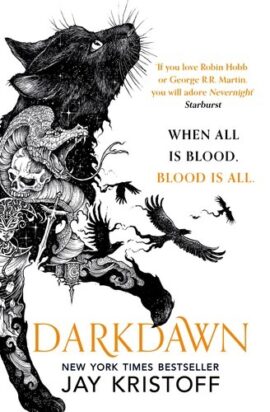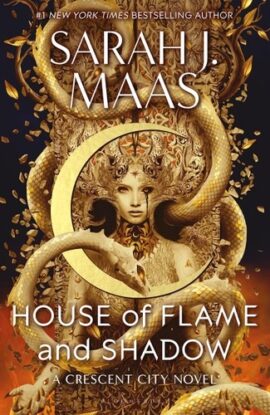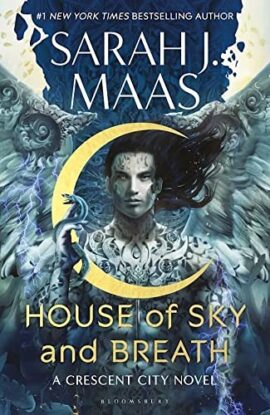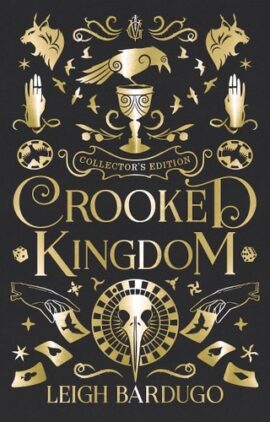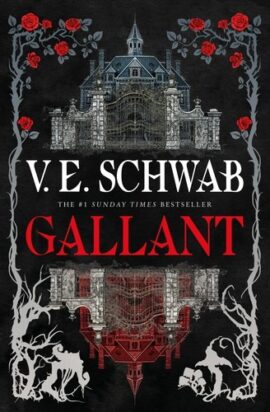The Fall of Gondolin
3.000,00 د.ج
In the Tale of The Fall of Gondolin are two of the greatest powers in the world. There is Morgoth of the uttermost evil, unseen in this story but ruling over a vast military power from his fortress of Angband. Deeply opposed to Morgoth is Ulmo, second in might only to Manwë, chief of the Valar.
Central to this enmity of the gods is the city of Gondolin, beautiful but undiscoverable. It was built and peopled by Noldorin Elves who, when they dwelt in Valinor, the land of the gods, rebelled against their rule and fled to Middle-earth. Turgon King of Gondolin is hated and feared above all his enemies by Morgoth, who seeks in vain to discover the marvellously hidden city, while the gods in Valinor in heated debate largely refuse to intervene in support of Ulmo’s desires and designs.
Into this world comes Tuor, cousin of Túrin, the instrument of Ulmo’s designs. Guided unseen by him Tuor sets out from the land of his birth on the fearful journey to Gondolin, and in one of the most arresting moments in the history of Middle-earth the sea-god himself appears to him, rising out of the ocean in the midst of a storm. In Gondolin he becomes great; he is wedded to Idril, Turgon’s daughter, and their son is Eärendel, whose birth and profound importance in days to come is foreseen by Ulmo.
At last comes the terrible ending. Morgoth learns through an act of supreme treachery all that he needs to mount a devastating attack on the city, with Balrogs and dragons and numberless Orcs. After a minutely observed account of the fall of Gondolin, the tale ends with the escape of Tuor and Idril, with the child Eärendel, looking back from a cleft in the mountains as they flee southward, at the blazing wreckage of their city. They were journeying into a new story, the Tale of Eärendel, which Tolkien never wrote, but which is sketched out in this book from other sources.
Following his presentation of Beren and Lúthien Christopher Tolkien has used the same ‘history in sequence’ mode in the writing of this edition of The Fall of Gondolin. In the words of J.R.R. Tolkien, it was ‘the first real story of this imaginary world’ and, together with Beren and Lúthien and The Children of Húrin, he regarded it as one of the three ‘Great Tales’ of the Elder Days.
In the Tale of The Fall of Gondolin are two of the greatest powers in the world. There is Morgoth of the uttermost evil, unseen in this story but ruling over a vast military power from his fortress of Angband. Deeply opposed to Morgoth is Ulmo, second in might only to Manwë, chief of the Valar.
Central to this enmity of the gods is the city of Gondolin, beautiful but undiscoverable. It was built and peopled by Noldorin Elves who, when they dwelt in Valinor, the land of the gods, rebelled against their rule and fled to Middle-earth. Turgon King of Gondolin is hated and feared above all his enemies by Morgoth, who seeks in vain to discover the marvellously hidden city, while the gods in Valinor in heated debate largely refuse to intervene in support of Ulmo’s desires and designs.
Into this world comes Tuor, cousin of Túrin, the instrument of Ulmo’s designs. Guided unseen by him Tuor sets out from the land of his birth on the fearful journey to Gondolin, and in one of the most arresting moments in the history of Middle-earth the sea-god himself appears to him, rising out of the ocean in the midst of a storm. In Gondolin he becomes great; he is wedded to Idril, Turgon’s daughter, and their son is Eärendel, whose birth and profound importance in days to come is foreseen by Ulmo.
At last comes the terrible ending. Morgoth learns through an act of supreme treachery all that he needs to mount a devastating attack on the city, with Balrogs and dragons and numberless Orcs. After a minutely observed account of the fall of Gondolin, the tale ends with the escape of Tuor and Idril, with the child Eärendel, looking back from a cleft in the mountains as they flee southward, at the blazing wreckage of their city. They were journeying into a new story, the Tale of Eärendel, which Tolkien never wrote, but which is sketched out in this book from other sources.
Following his presentation of Beren and Lúthien Christopher Tolkien has used the same ‘history in sequence’ mode in the writing of this edition of The Fall of Gondolin. In the words of J.R.R. Tolkien, it was ‘the first real story of this imaginary world’ and, together with Beren and Lúthien and The Children of Húrin, he regarded it as one of the three ‘Great Tales’ of the Elder Days.
| Editeur |
|---|
Produits similaires
House of Flame and Shadow
Bryce Quinlan never expected to see a world other than Midgard, but now that she has, all she wants is to get back. Everything she loves is in Midgard: her family, her friends, her mate. Stranded in a strange new world, she's going to need all her wits about her to get home again. And that's no easy feat when she has no idea who to trust.
Hunt Athalar has found himself in some deep holes in his life, but this one might be the deepest of all. After a few brief months with everything he ever wanted, he's in the Asteri's dungeons again, stripped of his freedom and without a clue as to Bryce's fate. He's desperate to help her, but until he can escape the Asteri's leash, his hands are quite literally tied.
In this sexy, breathtaking sequel to the #1 bestsellers House of Earth and Blood and House of Sky and Breath, Sarah J. Maas's Crescent City series reaches new heights as Bryce and Hunt's world is brought to the brink of collapse-with its future resting on their shoulders.
House of Sky and Breath: The unmissable #1 Sunday Times bestseller, from the multi-million-selling author of A Court of Thorns and Roses.
THE FIERCEST PASSION.
THE CRUELLEST FATE.
The #1 Sunday Times bestseller and sequel to the #1 New York Times bestseller. Sarah J. Maas's sexy, groundbreaking CRESCENT CITY series continues with this second instalment.
Bryce Quinlan and Hunt Athalar have made a pact. As they process the events of the Spring they will keep things platonic until Winter Solstice. But can they resist when the crackling tension between them is enough to set the whole of Crescent City aflame?
And they are not out of danger yet. Dragged into a rebel movement they want no part of, Bryce, Hunt and their friends find themselves pitted against the terrifying Asteri - whose notice they must avoid at all costs. But as they learn more about the rebel cause, they face a choice: stay silent while others are oppressed, or fight. And they've never been very good at staying silent.
In this sexy, action-packed sequel to the #1 bestseller House of Earth and Blood, Sarah J. Maas weaves a captivating story of a world about to explode - and the people who will do anything to save it.
Crooked Kingdom Collector’s Edition
Welcome to the world of the Grisha.
Kaz Brekker and his crew of deadly outcasts have just pulled off a heist so daring even they didn't think they'd survive. But instead of divvying up a fat reward, they're right back to fighting for their lives.
Double-crossed and badly weakened, the crew is low on resources, allies, and hope. As powerful forces from around the world descend on Ketterdam to root out the secrets of the dangerous drug known as jurda parem, old rivals and new enemies emerge to challenge Kaz's cunning and test the team's fragile loyalties.
A war will be waged on the city's dark and twisting streets - a battle for revenge and redemption that will decide the fate of the Grisha world.
Gallant
Fourth Wing: Discover TikTok’s newest fantasy romance obsession with this BBC Radio 2 Book Club Pick!
Twenty-year-old Violet Sorrengail was supposed to enter the Scribe Quadrant, living a quiet life among books and history. Now, the commanding general-also known as her tough-as-talons mother-has ordered Violet to join the hundreds of candidates striving to become the elite of Navarre: dragon riders.
But when you're smaller than everyone else and your body is brittle, death is only a heartbeat away . . . because dragons don't bond to "fragile" humans. They incinerate them.
With fewer dragons willing to bond than cadets, most would kill Violet to better their own chances of success. The rest would kill her just for being her mother's daughter-like Xaden Riorson, the most powerful and ruthless wingleader in the Riders Quadrant.
She'll need every edge her wits can give her just to see the next sunrise.
Yet, with every day that passes, the war outside grows more deadly, the kingdom's protective wards are failing, and the death toll continues to rise. Even worse, Violet begins to suspect leadership is hiding a terrible secret.
Alliances will be forged. Lives will be lost. Traitors will become allies . . . or even lovers. But sleep with one eye open because once you enter, there are only two ways out: graduate or die.
Praise for Fourth Wing
'Unputdownable thrill ride with an epic love story.' Tracy Wolff, No.1 New York Times bestselling author
"Fourth Wing is an unforgettable adventure from cover to cover. I cheered, laughed, grinned, and refused to put it down. This expertly crafted romantic fantasy is sure to launch the beginning of a brand-new insatiable fandom!" -Lexi Ryan, no.1 New York Times bestselling author
"Utterly addictive and completely unputdownable. I devoured every page and fell hopelessly, desperately in love with these characters and the incredible world Rebecca Yarros has so carefully, lovingly crafted. Hands down the best book hangover I've ever experienced. I can't wait for more!" -Helena Hunting, New York Times bestselling author
"An exhilarating dragon ride of a fantasy! Brutal, fast-paced, compelling, and simmering with romantic tension that left me on the edge of my seat. Fourth Wing is everything I want in a book and more. Phenomenal! Move this one to the top of your TBR" -Samantha Young, New York Times bestselling author
"Kapow, what a story! In Fourth Wing, Rebecca Yarros gives you gutsy young heroines and sexy bad boys living in a world where no one-not even the mightiest dragon-is safe. This is some sharp, bold, and delicious storytelling!" -Rachel Howzell Hall, critically acclaimed and bestselling author of We Lie Here and These Toxic Things
"House of the Dragon meets Divergent in this utterly thrilling, unputdownable new fantasy! Fourth Wing is full of scintillating adventure, soaring dragon flight, and slow-burn, enemies-to-lovers romance. Climb on and enjoy the ride!" -Amalie Howard, USA Today bestselling author
"As smoldering as it is spellbinding, Fourth Wing is a thrilling, dragon-filled delight!" -Cindi Madsen, USA Today bestselling author


